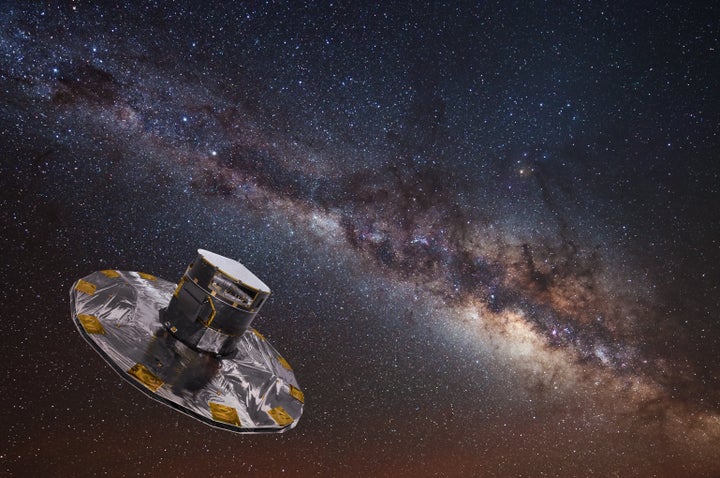Astronomers have published a three-dimensional map from the Gaia space telescope that contains over a billion stars.
It is, quite simply, the largest of its kind and over 1,000 times more comprehensive than anything that has been released before.

The astonishing map comes courtesy of the European Space Agency’s Gaia space telescope which has been tasked with a five year mission to create our most detailed map of the night sky yet.
Incredibly, Gaia’s current map is so large that scientists are appealing for the public to help sift through the 1142 million stars that the telescope has pictured.
Gaia sits around 1.5 million kilometres from Earth where it’s able to capture the exact position and brightness of each and every star.

Out of the billion stars that have been mapped Gaia has been able to accurately plot the distance and sideways motion of around 2 million of them.
This is just the start though, Gaia is just over halfway through its mission and there’s much more to come.
Alvaro Giménez, ESA’s Director of Science commented on the map saying, “Today’s release gives us a first impression of the extraordinary data that await us and that will revolutionise our understanding of how stars are distributed and move across our Galaxy.”
While a billion stars sounds like a lot, that makes up just 1 per cent of the Milky Way.
The eventual hope is that by the end of Gaia’s mission the ESA will have been able to create a space chart that maps the exact position, distance and motion of a billion stars in three dimensions.
To help increase their chances scientists have actually opened up Gaia’s data to the general public to help them sift through the vast quantities of data that’s being sent back to Earth.
In less that 24 hours since being released scientists have revealed that over 11,000 people have been downloading a huge total of 22TB of data.
